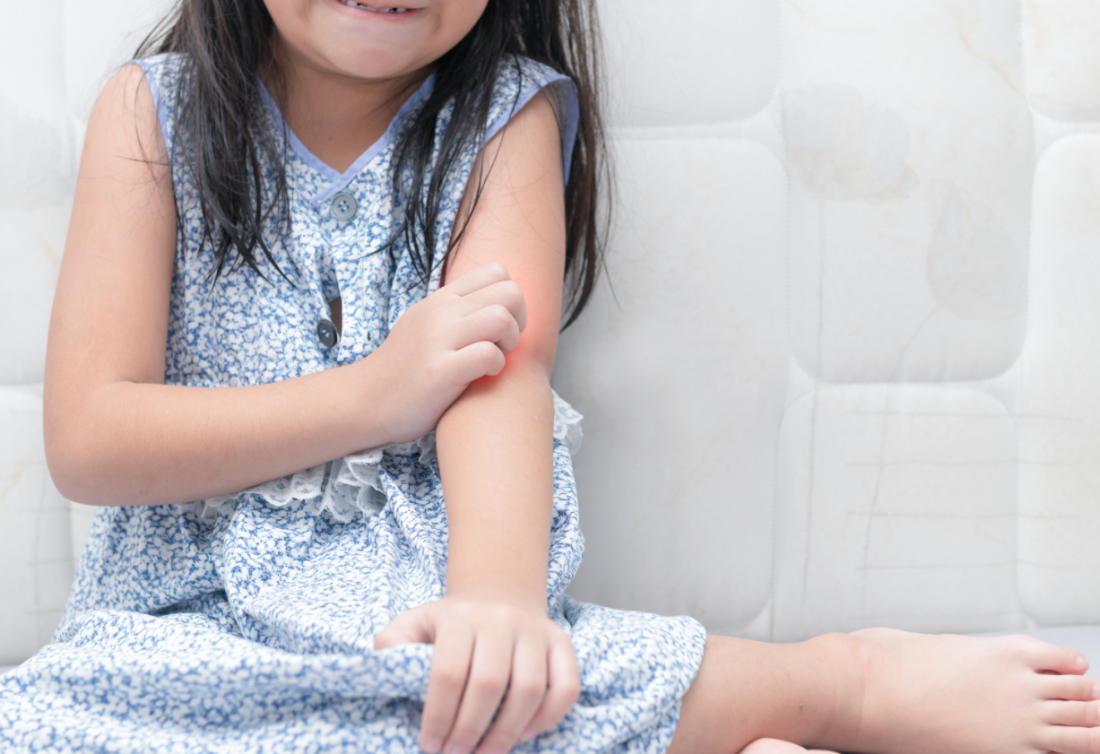Infants with eczema or atopic dermatitis get patches of itchy, reddish, dry skin. This itch is extremely uncomfortable to the extent of interfering with the baby’s sleep. Furthermore, too much scratching can lead to open wounds, which, when not properly treated, can lead to severe infection.

Sadly, the cure for this condition is not yet known; however, the good news is that eczema can be controlled to reduce the itchy feeling on your child’s skin. There are different ways to help your kid avoid flare-ups. This article will discuss how you can control frequent atopic dermatitis flare-ups.
Typically, eczema treatment targets four common issues: itching, dryness, infection, and irritated skin or inflammation.
• Dryness
For kids with atopic dermatitis, the skin barrier is not holding in water as required. For this reason, the skin gets dry and cracked, which can lead to infection. Dry skin can be extremely itchy. So, gentle skincare every day is essential when it comes to improving the skin barrier.
Give your child a shower or bath every day for 5 to 10 minutes. The water should be lukewarm. Soap is unnecessary as you can use a non-soap cleanser on sweaty parts like the neck, armpits, and groin. A non-fragrance and hypoallergenic cleanser is highly recommended. Never scrub the child’s skin with something rough, and avoid using a bubble bath.
Pat the child’s dry skin after the shower or bath with a soft towel. If the child has any topical medicine prescription, apply it to the affected area.
Apply a moisturizer to the body after bathing every day. This will help lock in moisture and prevent the skin from extreme dryness.
Dress up the child in clothes made from soft natural fibers, such as 100% cotton. Avoid using cloth softeners or sheets in a dryer. Reduce your kid’s contact to aspects that irritate sensitive skin. This includes animal dander, dust, and smoke.
• Minimizing the Itch
Gentle skincare is the first step to making the baby’s skin feel less itchy.
Prevent scratching. Scratching will make the skin feel itchier and, when done for a prolonged period, can create open sores, which are prone to infections. So, ensure the child doesn’t scratch their skin with nails and make sure their nails are cut short.
Although studies are inconclusive, many parents find that applying wet wraps immediately after bathing their child and applying medication and moisturizers helps. Apply the topical medication to the parts of the rash as you apply moisturizer to the whole body.
• Soak onesies or a pair of pajamas in warm water.
• Squeeze the pajamas until they are damp
• Put the damp pajamas on the child, with dry ones on top
• The room should be warm or cover your kid with a warm blanket
• Let the wet wraps stay for at least 30 minutes
• Reapply the moisturizer once you remove the damp wraps.
• Healing Irritated Skin
Topical medicines are used to heal the rashes. These medicines are used two times a day when the inflammation is flaring. These medications come in various forms and strengths like lotions, creams, ointments, oils, and gels. The physician will assist you in getting the perfect combination that fits your kid’s skin. If used properly, topical steroids are effective and safe.
Non-steroid medications can also help in healing painful inflammation using various active ingredients in place of topical steroids. They can be useful on mild atopic dermatitis and delicate skin parts such as the groin, armpits, and eyelids.
Preventing and Managing Skin Infections
Viruses and bacteria will make the inflammation worse. So, it’s important to watch out for the signs of infections. Look out for crusting, oozing, blisters, and serious rashes that are not improving with the usual treatment. Consult a medical professional if you believe your toddler’s skin has an infection. Infections will require antiviral or antibiotic medicines.
When to Stop Treatment for Atopic Dermatitis Rash
Once your kid’s skin does not feel itchy, and the parts of inflammation are soft and smooth, you can stop using the medication as frequently. It is usual for the skin to get a discoloration after the rashes heal, but it will return to normal with time. Nevertheless, because eczema is a continuing skin issue, it’s essential to proceed with the gentle skincare routine.




